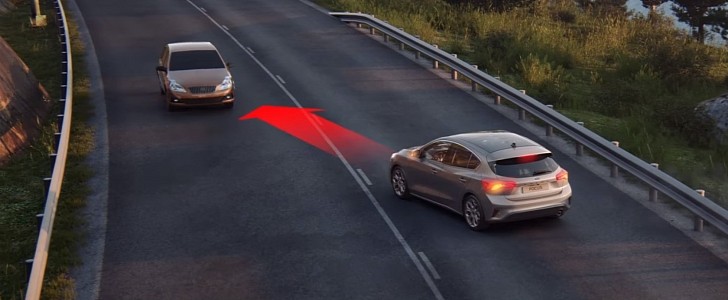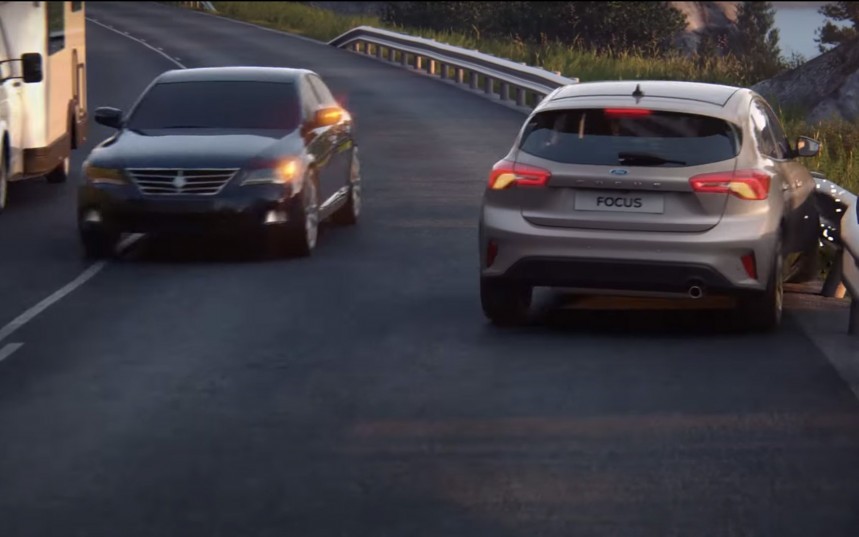The technology is not new, being available as standard or optional on cars from brands such as BMW and VW but the vast majority of collision braking systems focus on the events before the crash.
To add safety in all cases, the Ford post collision assist was added to the existing suite of safety features like pre-collision assist and evasive steering assist that use the radar and camera to aid faster turns of the wheel to avoid an accident.
Its development began after a study examining accident data was commissioned by the company and revealed a frequency of accidents worsening after an initial impact.
That caused Ford to develop an assist that can function as a secondary safety measure and minimize further damage in case all the other assists fail, and a crash has taken place.
The system engages the brakes after an impact to help provide a moderate level of braking and prevent the car from rolling and causing further damage to other vehicles or harm to its occupants and the near-by pedestrians.
The vehicle can automatically engage the brakes by interacting with the restraints module, when a signal is sent the airbag sensors that detect an impact or in the case of a collision that results in fuel cut-off.
To put it into example, the most common accident that results in further collisions takes place when the car is traveling at moderate or high-speed on a two-lane road and a vehicle on the other side recklessly overtakes another.
The driver will most likely veer into the guardrail to avoid a direct collision and the car sensors will detect an impact and engage the brakes. The risk of losing control of the car and causing further damage is now eliminated.
Ford introduced this technology as standard in 2019, on its Edge crossover and since then added it to current models like the 2020 Explorer and Transit or the upcoming Mustang Mach-E. The Co-Pilot360 2.0 suite will now include this assist on all available cars.
In the near future, Ford Motor Co will work with Intel’s autonomous driving unit, Mobileye, to develop an improved collision avoidance system for its vehicles.
The upgraded system will use EyeQ sensing technology along with a vision-processing software to support Ford's Co-Pilot360 system analyze and avoid the potential of initial or secondary collisions in a more effective way than with current technology.
Ford will include Mobileye's logo in driver-assist displays and is also considering using its Roadbook map system, which uses anonymized, data from crowd-sourced vehicle cameras.
We can only hope that we never have to experience how pre of post collision technology works but it is a very good addition to the evolving safety features of modern-day cars. It offers much-needed protection in potential crash situations.
Its development began after a study examining accident data was commissioned by the company and revealed a frequency of accidents worsening after an initial impact.
That caused Ford to develop an assist that can function as a secondary safety measure and minimize further damage in case all the other assists fail, and a crash has taken place.
The system engages the brakes after an impact to help provide a moderate level of braking and prevent the car from rolling and causing further damage to other vehicles or harm to its occupants and the near-by pedestrians.
The vehicle can automatically engage the brakes by interacting with the restraints module, when a signal is sent the airbag sensors that detect an impact or in the case of a collision that results in fuel cut-off.
To put it into example, the most common accident that results in further collisions takes place when the car is traveling at moderate or high-speed on a two-lane road and a vehicle on the other side recklessly overtakes another.
The driver will most likely veer into the guardrail to avoid a direct collision and the car sensors will detect an impact and engage the brakes. The risk of losing control of the car and causing further damage is now eliminated.
In the near future, Ford Motor Co will work with Intel’s autonomous driving unit, Mobileye, to develop an improved collision avoidance system for its vehicles.
The upgraded system will use EyeQ sensing technology along with a vision-processing software to support Ford's Co-Pilot360 system analyze and avoid the potential of initial or secondary collisions in a more effective way than with current technology.
Ford will include Mobileye's logo in driver-assist displays and is also considering using its Roadbook map system, which uses anonymized, data from crowd-sourced vehicle cameras.
We can only hope that we never have to experience how pre of post collision technology works but it is a very good addition to the evolving safety features of modern-day cars. It offers much-needed protection in potential crash situations.








